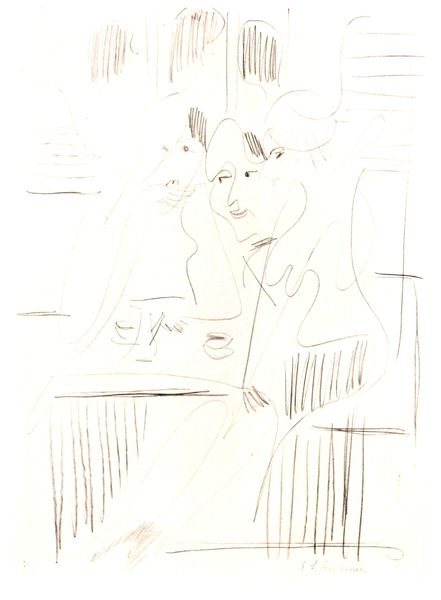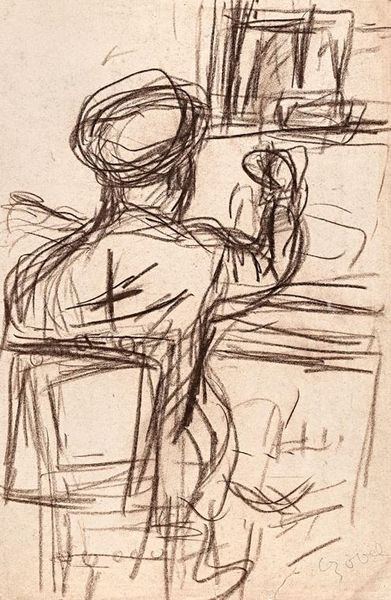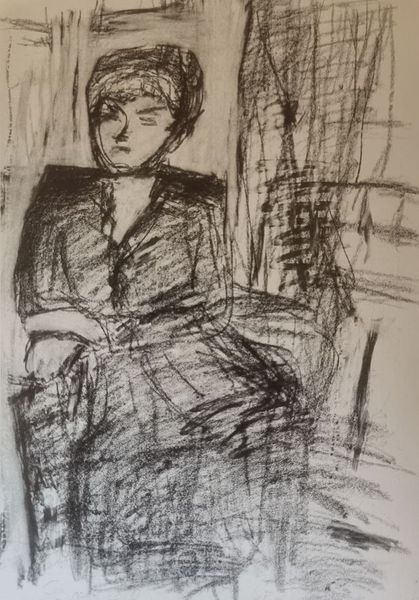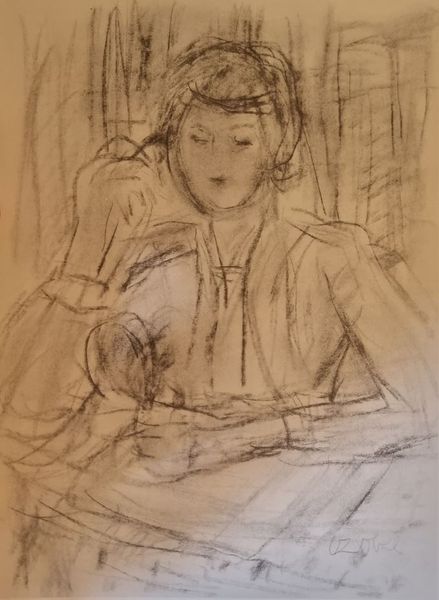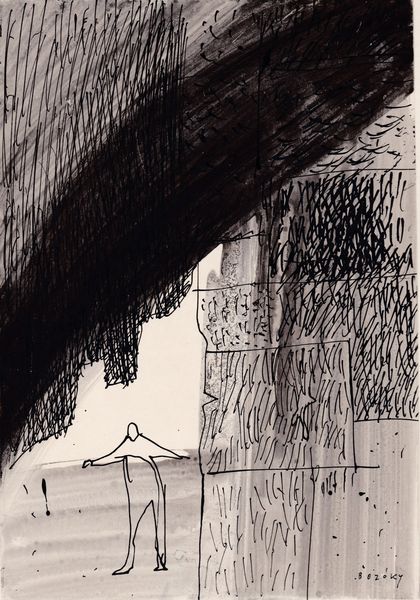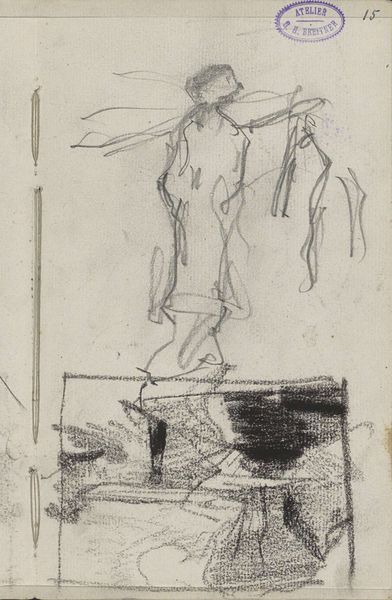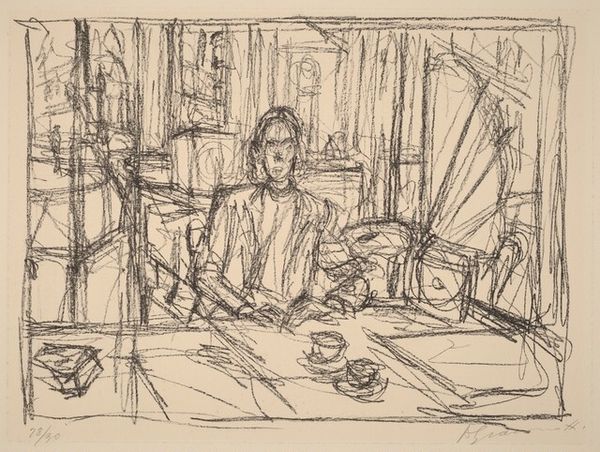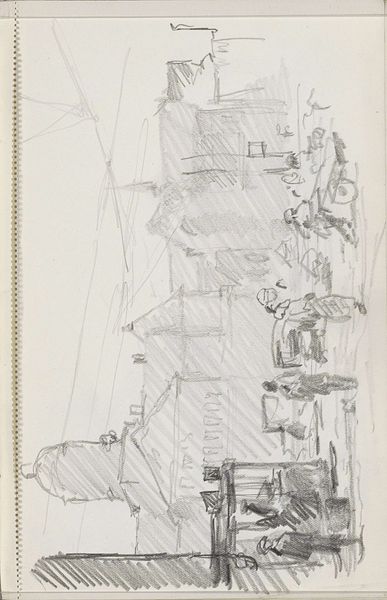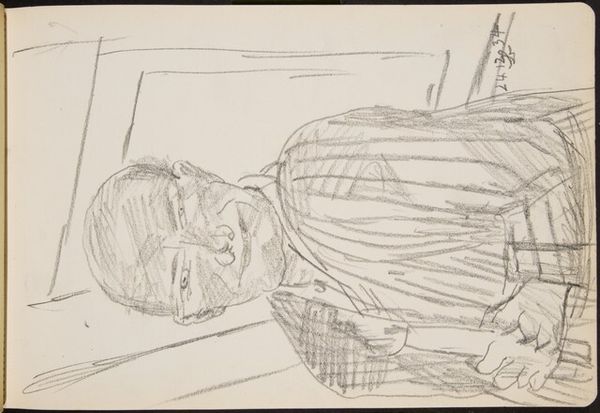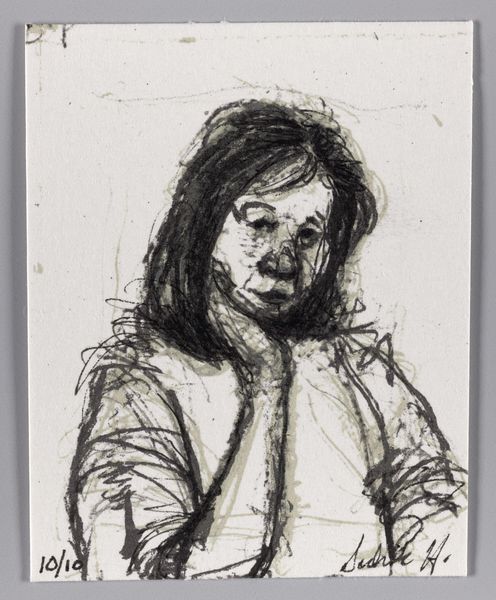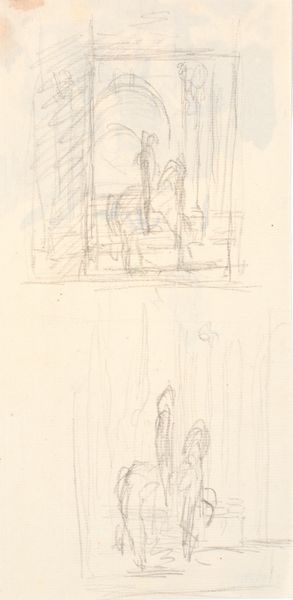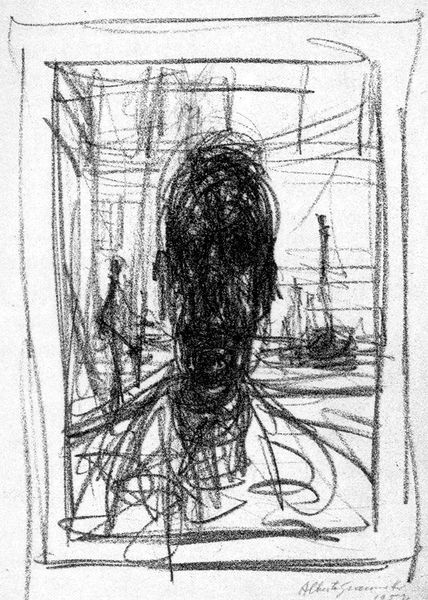
Dimensions: unconfirmed: 293 x 253 mm
Copyright: © Frank Auerbach | CC-BY-NC-ND 4.0 DEED, Photo: Tate
Curator: Here we have Frank Auerbach's "Sketch from Sickert's 'Lady Martin,'" currently held in the Tate Collections. Editor: It feels like an explosion in a pencil factory! Such raw energy, yet a somber sort of quality permeates the piece. Curator: Auerbach’s distinct style, even in a sketch, is recognizable through the relentless layering and almost violent application of graphite. Editor: Yes, the structural integrity hinges on this tension—a frantic search for form. We can observe how each line fights to define and simultaneously deny the figure. Curator: There's a beauty in that struggle, isn't there? The subject, obscured yet present, embodies a fleeting moment captured in relentless energy. Editor: Absolutely. It’s like witnessing the genesis of an idea, a thought in the making. Curator: It’s a piece I find deeply evocative; a testament to the artist's process and a glimpse into their inner world. Editor: And through those fractured lines, we find a strange clarity about the nature of portraiture itself.
Comments
tate 6 months ago
⋮
http://www.tate.org.uk/art/artworks/auerbach-sketch-from-sickerts-lady-martin-t07631
Join the conversation
Join millions of artists and users on Artera today and experience the ultimate creative platform.
tate 6 months ago
⋮
Throughout his career Auerbach has frequently made drawings after paintings in the National Gallery in order, he remarked, 'to remind myself of what quality is and what's actually demanded of paintings' (Lampert, p.34). He was less often so interested in modern paintings, but made this drawing after a portrait by Walter Sickert (1860-1942) in the Tate collection (Tate T00222). Sickert had taught Auerbach's teacher David Bomberg (1890-1957), and both artists admired Sickert's idiosyncratic views of life in modern London. Auerbach's studio is very close to one that had been used by Sickert in Camden Town. This portrait of Lady Martin is one of the latest in date of Sickert's paintings at Tate. His late work had in the past been undervalued, in part because of its reliance on photography. Auerbach helped to pioneer its appreciation in the 1970s and, in 1982, he selected the Hayward Gallery's exhibition Late Sickert: Paintings 1927-1942. For this sketch Auerbach chose to use pencil and crayon, a medium that would enable him to draw lightly at first and then with greater emphasis. Auerbach follows closely the details of the original painting, including the easel standing near the wall in the background. This drawing, as a mid point between Sickert's work and Auerbach's, is a fascinating comment on both artists. Auerbach analyses the subtle relation between fast and slow movements in Sickert's design. In addition, a right angle to the left of the sitter's head projects it forward in a manner not found in Sickert's painting. The affinities between Sickert and Auerbach have been discussed by several art historians in recent years. Lampert remarked that 'In Auerbach's paintings and drawings there is precisely this sense of movement, the promise and echo of which Sickert, a fine writer on both the practice and purpose of art, speaks' (Lampert p.14). Further reading:Robert Hughes, Frank Auerbach, London 1990Catherine Lampert, Norman Rosenthal and Isabel Carlisle, Frank Auerbach: Paintings and Drawings 1954-2001, exhibition catalogue, Royal Academy of Arts, London 2001 Heather BirchallJanuary 2002
